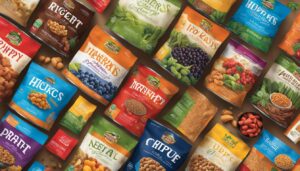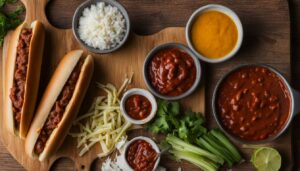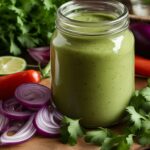Are you wondering if you can make kibble for your dog without following a specific recipe? The answer is yes! Creating homemade kibble for your furry friend is easier than you might think, and it allows you to provide them with a nutritious and balanced meal. Whether you’re looking to save money or have more control over the ingredients, making homemade kibble is a fantastic option.
With homemade dog food recipes, you can ensure that your pup is getting a well-balanced meal without relying on pre-packaged options. By using whole-food ingredients, you can steer clear of fillers and artificial additives, promoting your dog’s health and well-being.
In this article, we’ll explore the benefits of homemade kibble, a basic recipe to get you started, and tips for adjusting the recipe to suit your dog’s needs. Let’s dive in and discover the exciting world of homemade pet food!
Contents
- 1 Benefits of Homemade Kibble
- 2 Basic Recipe for Homemade Kibble
- 3 Cooking Process for Homemade Kibble
- 4 Adjusting the Recipe for Your Dog
- 5 Transitioning to Homemade Kibble
- 6 Foods to Avoid in Homemade Kibble
- 7 Variety in Homemade Kibble
- 8 Monitoring Your Dog’s Health
- 9 Conclusion
- 10 FAQ
- 10.1 Can you make kibble without a recipe?
- 10.2 Are there any benefits to making homemade kibble?
- 10.3 What is a basic recipe for homemade kibble?
- 10.4 How do I cook homemade kibble?
- 10.5 How can I adjust the recipe for my dog?
- 10.6 How do I transition my dog to homemade kibble?
- 10.7 What foods should I avoid in homemade kibble?
- 10.8 Can I include variety in homemade kibble?
- 10.9 How should I monitor my dog’s health on homemade kibble?
- 10.10 Is homemade kibble a good option for my dog?
- 11 Source Links
Key Takeaways:
- Making homemade kibble without a recipe is possible and allows you to have control over the quality of ingredients.
- Homemade kibble can be tailored to your dog’s dietary needs and preferences, offering flexibility and variety in their meals.
- Transitioning to homemade kibble should be done gradually to avoid digestive issues.
- Some foods should be avoided in homemade kibble, as they can be toxic to dogs.
- Monitoring your dog’s health and consulting with your vet are essential for ensuring a balanced diet.
Benefits of Homemade Kibble
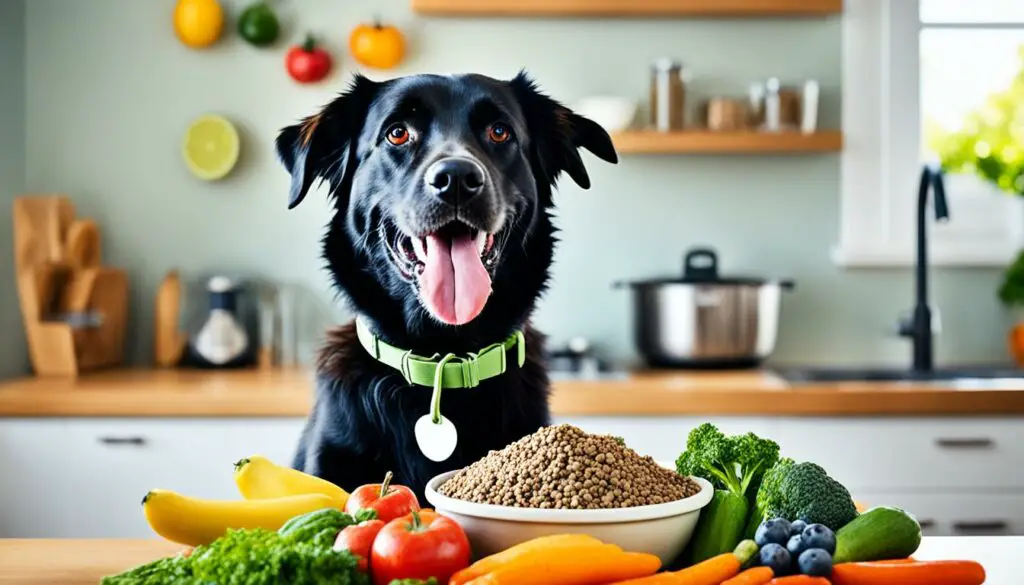
Making your own dog food at home has become increasingly popular among pet owners, and with good reason. DIY dog food, also known as homemade pet food, offers a range of benefits that can contribute to your furry friend’s overall health and happiness.
1. Quality Control
When you make homemade kibble, you have complete control over the ingredients you use. This means you can ensure that your dog’s food is free from fillers, artificial additives, and unhealthy preservatives. Opting for natural, whole-food ingredients allows you to prioritize your dog’s health and well-being.
2. Tailored to Your Dog’s Needs
Every dog is unique, with different dietary needs and preferences. By making homemade kibble, you have the flexibility to tailor the recipe to suit your dog’s specific requirements. Whether they have allergies, sensitivities, or simply prefer certain flavors, you can customize the ingredients to ensure they get a meal they love.
3. Cost-Effective Solution
Contrary to what some may think, making kibble at home can actually be more cost-effective in the long run. By buying ingredients in bulk and preparing larger batches, you can save money compared to frequently purchasing commercial dog food. Plus, you’ll have peace of mind knowing exactly what goes into your dog’s food.
If you’re considering transitioning to homemade pet food or looking for alternative options to supplement your dog’s diet, making homemade kibble can be a rewarding and beneficial choice.
Once you’re convinced of the advantages of homemade kibble, it’s time to explore a basic recipe that you can use as a starting point. Section 3 will guide you through a simple and nutritious homemade kibble recipe.
Basic Recipe for Homemade Kibble

While you can make kibble without a specific recipe, it’s helpful to have a basic recipe as a starting point. A simple recipe could include:
- Ground turkey
- Zucchini
- Spinach
- Carrots
- Turmeric seasoning
- An egg
- Rice
This combination provides a good balance of protein, nutrients, and fiber for your dog. Ground turkey serves as a lean protein source, while the vegetables and rice offer essential nutrients and carbohydrates. Turmeric seasoning can provide various health benefits for dogs. Mix all these ingredients together to create a wholesome homemade kibble for your furry friend.
Pro Tip: You can experiment with different vegetables and protein sources based on your dog’s preferences and dietary needs. Just be sure to avoid any toxic foods that are harmful to dogs.
Here’s a simple breakdown of the basic recipe:
| Ingredients | Benefits |
|---|---|
| Ground turkey | Lean protein source |
| Zucchini | Provides vitamins and minerals |
| Spinach | Rich in antioxidants |
| Carrots | High in fiber and beta-carotene |
| Turmeric seasoning | Potential anti-inflammatory properties |
| An egg | Additional protein |
| Rice | Complex carbohydrates for energy |
Feel free to adjust the quantities and proportions of the ingredients based on your dog’s size and specific dietary requirements. Always consult with your vet to ensure the recipe is suitable for your pet. With this basic recipe, you can start making homemade kibble without the need for a specific recipe and provide your furry friend with a nutritious and delicious meal.
Cooking Process for Homemade Kibble
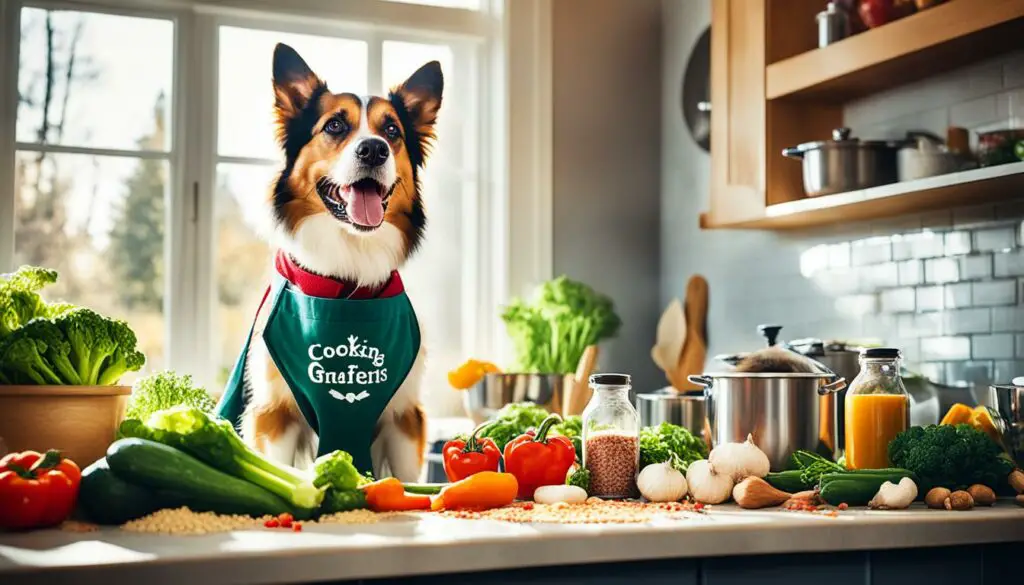
The cooking process for homemade kibble is relatively straightforward. To make a nutritious meal for your dog, follow these simple steps:
- Brown the ground turkey: In a skillet, heat coconut oil over medium heat. Add the ground turkey and cook until it’s no longer pink, breaking it up into smaller pieces while cooking.
- Add the vegetables: Once the turkey is cooked, add the vegetables of your choice. Zucchini, spinach, and carrots are great options. Cook the vegetables until they are tender.
- Mix in the egg and cooked rice: Crack an egg into the skillet and mix it in with the turkey and vegetables. Add cooked rice as well, ensuring that everything is well combined.
- Let it cool before serving: Allow the mixture to cool completely before serving it to your dog. This will prevent any burns from the hot food.
It’s important to note that the portion size may vary depending on your dog’s weight and activity level. Consult with your vet to determine the appropriate serving size for your furry friend.
Below is a visual representation of the cooking process for homemade kibble:
By following these simple steps, you can prepare a homemade meal that is both nutritious and delicious for your beloved canine companion.
Adjusting the Recipe for Your Dog
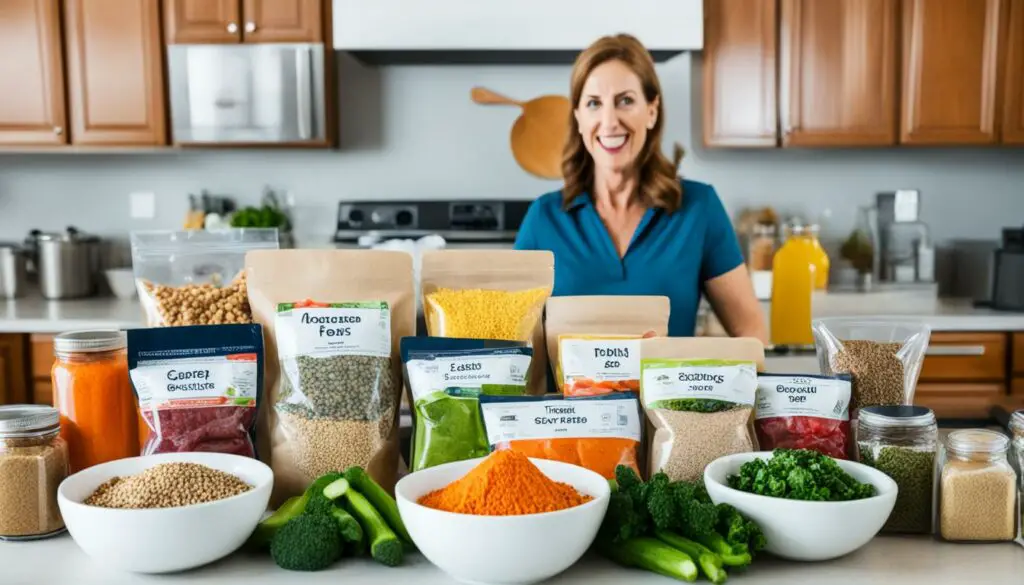
Every dog is unique, and their dietary needs may vary. That’s why it’s important to adjust the homemade kibble recipe to meet your dog’s specific needs. By customizing the protein source, vegetables, and grains used, you can create a meal that is tailored to your furry friend’s preferences and nutritional requirements.
When it comes to choosing the protein source, consider options like chicken, beef, or fish, depending on what your dog enjoys and any dietary restrictions they may have. Experimenting with different types of vegetables such as sweet potatoes, peas, or green beans can provide added variety and nutritional benefits.
Grains such as brown rice or quinoa can be included in the recipe to provide carbohydrates, but if your dog has a grain allergy or sensitivity, you can opt for grain-free alternatives like mashed potatoes or lentils.
Consulting with your veterinarian is crucial in ensuring that the recipe you create meets all of your dog’s nutritional needs. They can provide guidance on appropriate portion sizes, essential nutrients, and any specific dietary considerations based on factors such as your dog’s age, breed, and health conditions.
Adjusting the recipe to suit your dog’s preferences and needs can help optimize their overall health and well-being. It’s an opportunity to provide a delicious and nutritious meal that they will happily devour.
Tips for Adjusting the Recipe:
- Explore different protein sources to find what your dog enjoys the most.
- Include a variety of vegetables for added nutrients and flavors.
- Consider grain-free options for dogs with grain sensitivities.
- Consult with your veterinarian for personalized guidance.
By customizing the homemade kibble recipe, you can provide your dog with a diverse and nutritious diet that supports their overall health and happiness.
Transitioning to Homemade Kibble
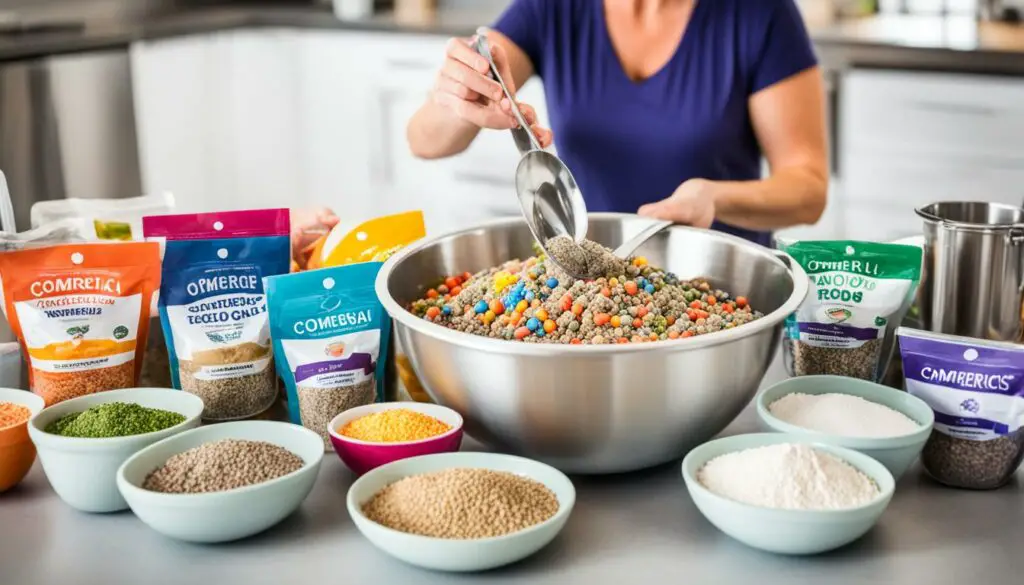
Transitioning your dog to homemade kibble requires a gradual approach to avoid digestive issues. By following a few simple steps, you can smoothly introduce homemade dog food into their diet.
Start by mixing a small amount of the homemade food with their regular kibble. This allows your dog to become familiar with the new flavors and textures while maintaining some familiarity. Slowly increase the proportion of homemade food over time, giving your dog’s digestive system plenty of time to adjust.
During the transition period, it’s crucial to closely monitor your dog’s weight and overall well-being. Keep an eye out for any signs of discomfort or digestive upset. If you have any concerns, it’s always a good idea to consult with your vet for guidance and support.
Remember, every dog is unique, and their transition to homemade food may take some time. Be patient and observant, making adjustments as needed based on your dog’s individual needs and preferences.
Foods to Avoid in Homemade Kibble
While homemade kibble offers many benefits, it is crucial to be aware of foods that can be toxic to dogs. These include:
- Garlic: Contains compounds that can damage a dog’s red blood cells and lead to anemia.
- Onions: Can cause damage to a dog’s red blood cells, resulting in anemia.
- Chocolate: Contains theobromine, which is toxic to dogs and can cause problems with the heart and nervous system.
- Raisins and Grapes: Can cause acute kidney failure in dogs.
- Kale: Rich in calcium oxalate, consuming large amounts can lead to kidney and bladder stones.
- Cooked Bones: Can splinter and cause internal injuries or obstructions when consumed by dogs.
- Soy Sauce: Contains high levels of sodium, which can be harmful to dogs and may result in sodium poisoning.
- Avocado: Contains a substance called persin, which can cause vomiting, diarrhea, and heart congestion in dogs.
It is important to educate yourself on the complete list of foods that can be harmful to dogs and avoid using them when preparing homemade food for your pet. When in doubt, consult with your vet for guidance and to ensure the safety of your furry friend.
| Foods to Avoid | Reason |
|---|---|
| Garlic | Contains compounds that can damage a dog’s red blood cells and lead to anemia. |
| Onions | Can cause damage to a dog’s red blood cells, resulting in anemia. |
| Chocolate | Contains theobromine, which is toxic to dogs and can cause problems with the heart and nervous system. |
| Raisins and Grapes | Can cause acute kidney failure in dogs. |
| Kale | Rich in calcium oxalate, consuming large amounts can lead to kidney and bladder stones. |
| Cooked Bones | Can splinter and cause internal injuries or obstructions when consumed by dogs. |
| Soy Sauce | Contains high levels of sodium, which can be harmful to dogs and may result in sodium poisoning. |
| Avocado | Contains a substance called persin, which can cause vomiting, diarrhea, and heart congestion in dogs. |
Expert Insight:
“Dogs have a different digestive system compared to humans, and certain foods that are safe for us can be dangerous for them. Being aware of foods that are toxic to dogs and avoiding them in homemade kibble recipes is essential for their well-being.”
— Dr. Sarah Johnson, Veterinary Nutritionist
Variety in Homemade Kibble
To ensure that your dog receives a well-rounded diet, incorporating a variety of meats, fruits, and vegetables in their homemade kibble is highly recommended. This not only provides them with different nutrients but also adds flavors to their meals. However, it’s important to consider your dog’s specific needs, especially if they have a sensitive stomach.
If your dog has a sensitive stomach, it may be best to stick to a combination of ingredients that you know works well for them. Paying attention to their digestion and any food intolerances they may have can help you create a homemade kibble that is both nutritious and gentle on their stomach.
A diverse range of ingredients can offer several benefits. Different meats, such as chicken, beef, and fish, provide varying levels of protein and essential amino acids. Including a variety of vegetables like sweet potatoes, green beans, and peas offers different vitamins and minerals for overall health.
Adding fruits like blueberries, apples, or bananas can provide antioxidants and natural sugars that contribute to your dog’s well-being. It’s important to note that not all fruits and vegetables are safe for dogs, so always research and consult with your vet before including them in their homemade kibble.
“By varying the ingredients in your dog’s homemade kibble, you can ensure they are receiving a wide range of nutrients and flavors, making their meals more enjoyable and nutritious.”
Sample Ingredient Combination for Varied Homemade Kibble:
| Protein Source | Vegetables | Additional Ingredients |
|---|---|---|
| Ground turkey | Carrots, broccoli, kale | Egg, olive oil, turmeric |
| Salmon | Sweet potatoes, spinach, green beans | Coconut oil, pumpkin puree, parsley |
| Beef | Cauliflower, bell peppers, peas | Flaxseed oil, chia seeds, cinnamon |
By using different combinations of protein sources, vegetables, and additional ingredients, you can create a varied and nutritious homemade kibble for your dog. Remember to introduce new ingredients gradually and monitor their response to ensure it agrees with their system.
Monitoring Your Dog’s Health
Ensuring the health of your dog is crucial when it comes to feeding them homemade kibble. By keeping a close eye on their weight, activity level, and overall well-being, you can monitor the effectiveness of their diet and make necessary adjustments. Regular check-ups with your vet also play a vital role in maintaining your dog’s health on a homemade diet.
Signs of a Healthier Dog
- Shiny coat
- Healthy weight maintenance
- Increased energy levels
- Strong immune system
- Regular bowel movements
Signs to Watch Out For
- Weight gain or loss
- Excessive shedding
- Lethargy or decreased activity
- Gastrointestinal issues (vomiting, diarrhea, constipation)
- Changes in appetite or water consumption
Remember that every dog is unique, and their dietary needs may vary. Monitoring their health is essential to ensure that they are receiving the proper nutrients from their homemade kibble. If you notice any concerning signs or have doubts about their overall well-being, consult with your vet for professional guidance and advice.
| Signs of a Healthy Dog on Homemade Kibble | Potential Health Concerns |
|---|---|
| A shiny, lustrous coat | Excessive shedding |
| Maintaining a healthy weight | Weight gain or loss |
| Increased energy levels and activity | Lethargy or decreased activity |
| A strong immune system | Gastrointestinal issues (vomiting, diarrhea, constipation) |
| Regular bowel movements | Changes in appetite or water consumption |
Conclusion
In conclusion, homemade kibble offers a fantastic opportunity for dog owners to provide their furry friends with a nutritious and balanced diet. By following a basic recipe and making necessary adjustments to meet your dog’s specific needs, you can create meals that will be both healthy and delicious. However, it is crucial to consult with your vet to ensure that your dog’s diet fulfills their nutritional requirements.
Making homemade kibble not only allows you to have control over the quality of ingredients but also gives you the opportunity to tailor the recipe to your dog’s preferences and dietary restrictions. By prioritizing your dog’s health and well-being, you can ensure that they receive the best possible nutrition.
Remember, homemade kibble should not replace professional veterinary advice. Regular check-ups with your vet can help monitor your dog’s health and ensure that their diet remains balanced. With the right approach and guidance, the journey of making homemade kibble can be a rewarding experience for both you and your beloved canine companion.
FAQ
Can you make kibble without a recipe?
Yes, you can make homemade kibble for your dog without a specific recipe. By using whole-food ingredients, you can create a nutritious and balanced meal.
Are there any benefits to making homemade kibble?
Yes, there are several benefits to making homemade kibble. It allows you to control the quality of ingredients, tailor the recipe to your dog’s needs, and can be more cost-effective in the long run.
What is a basic recipe for homemade kibble?
A simple recipe could include ground turkey, vegetables like zucchini and spinach, a dog-safe seasoning, an egg, and rice as a complex carbohydrate. This provides a balanced meal for your dog.
How do I cook homemade kibble?
Brown the ground turkey in a skillet with coconut oil, add the vegetables and cook until tender. Mix in the egg and cooked rice, then let it cool before serving to your dog.
How can I adjust the recipe for my dog?
You can adjust the protein source, vegetables, and grains used in the homemade kibble recipe to meet your dog’s specific needs. Consult with your vet to ensure it meets their nutritional requirements.
How do I transition my dog to homemade kibble?
Transition gradually by mixing a small amount of homemade food with their regular kibble and increasing the proportion over time. Monitor your dog’s well-being and consult with your vet if needed.
What foods should I avoid in homemade kibble?
Avoid garlic, onions, chocolate, raisins, grapes, kale, cooked bones, soy sauce, and avocado, as they can be toxic to dogs. Educate yourself on the complete list of harmful foods.
Can I include variety in homemade kibble?
Yes, it’s recommended to incorporate a variety of meats, fruits, and vegetables to provide different nutrients and flavors. Stick to what works well for your dog if they have a sensitive stomach.
How should I monitor my dog’s health on homemade kibble?
Keep an eye on their weight, activity level, and overall well-being. Regular check-ups with your vet can help ensure a balanced diet and good health.
Is homemade kibble a good option for my dog?
Homemade kibble can be a great option for providing a nutritious and balanced diet. Just remember to consult with your vet to ensure it meets your dog’s nutritional needs.


